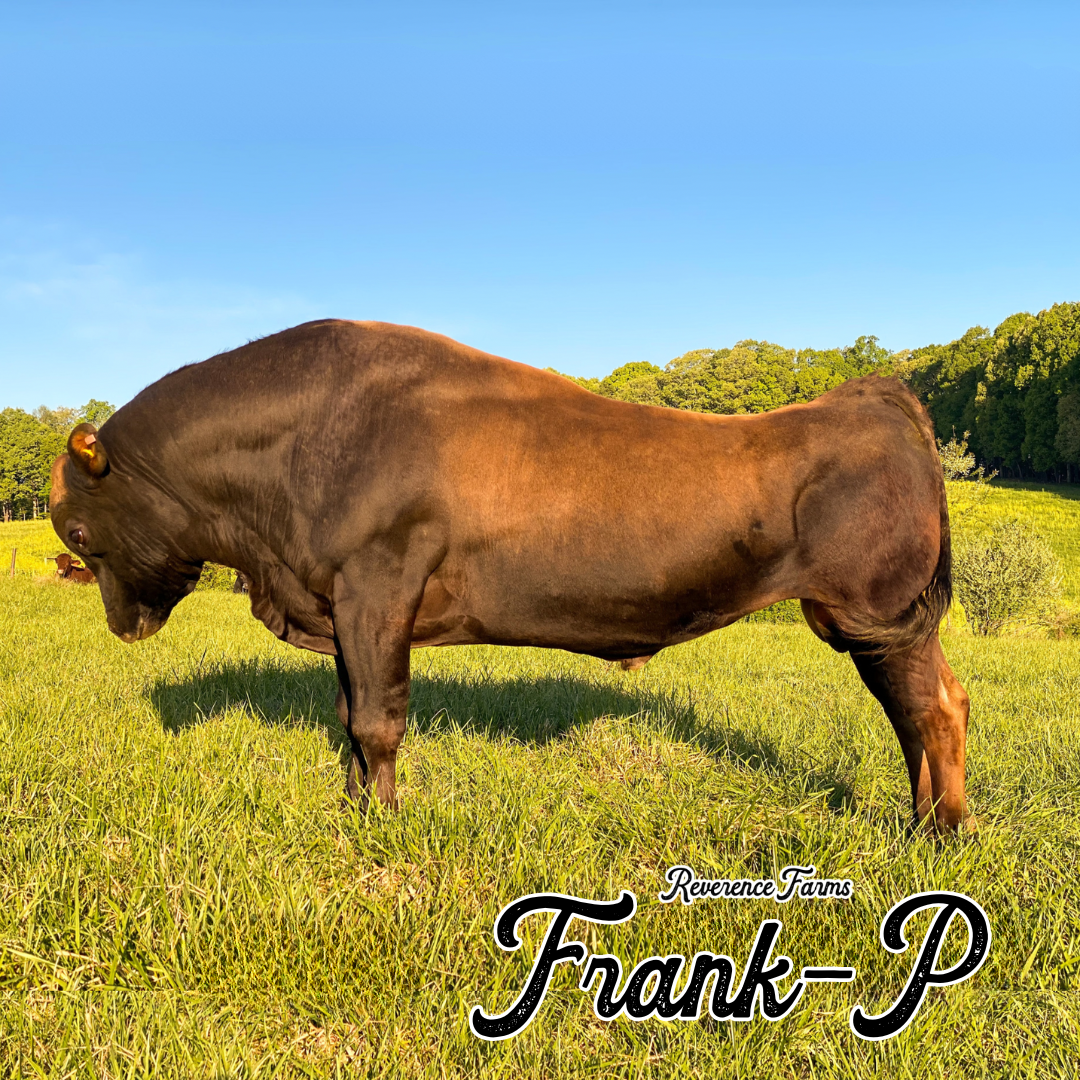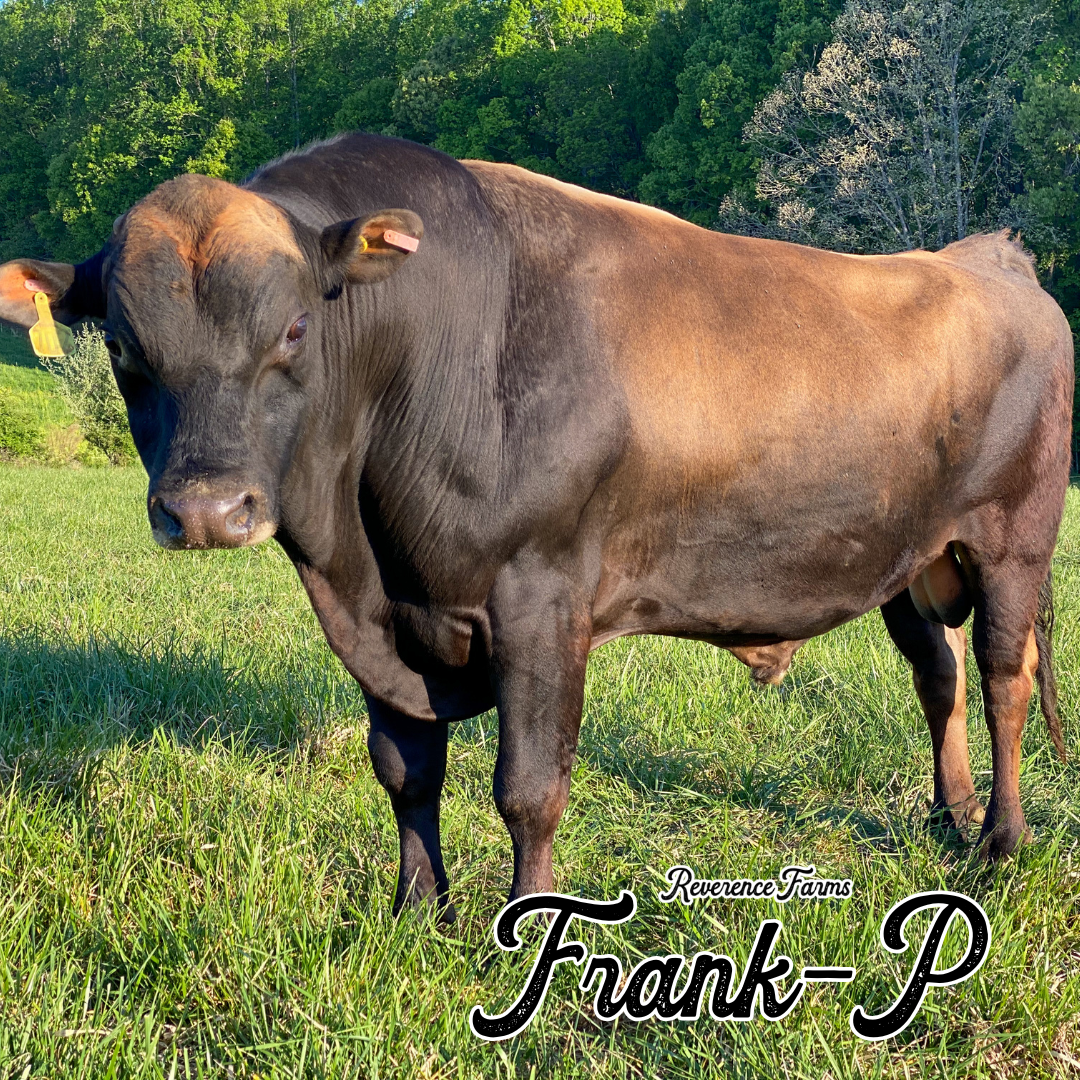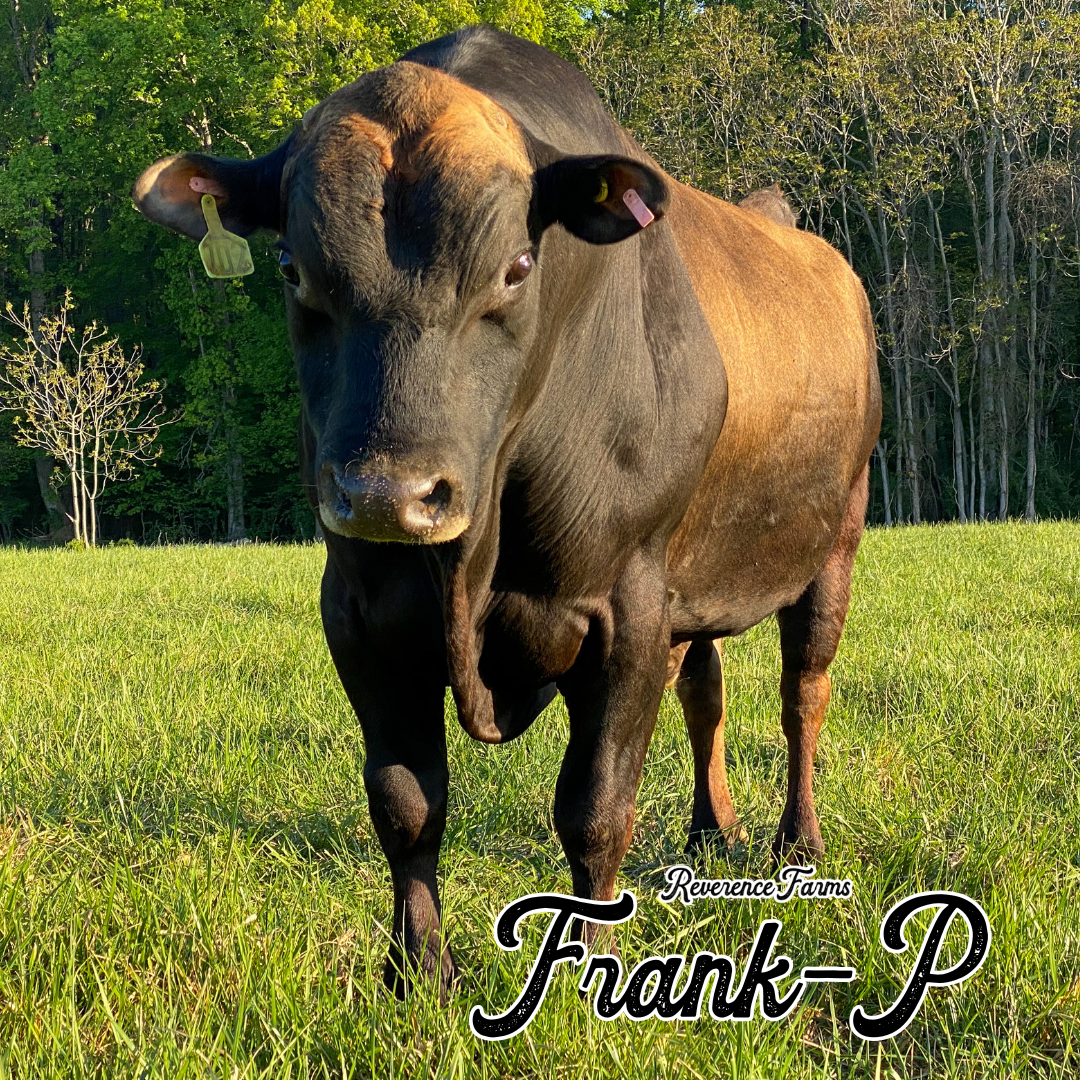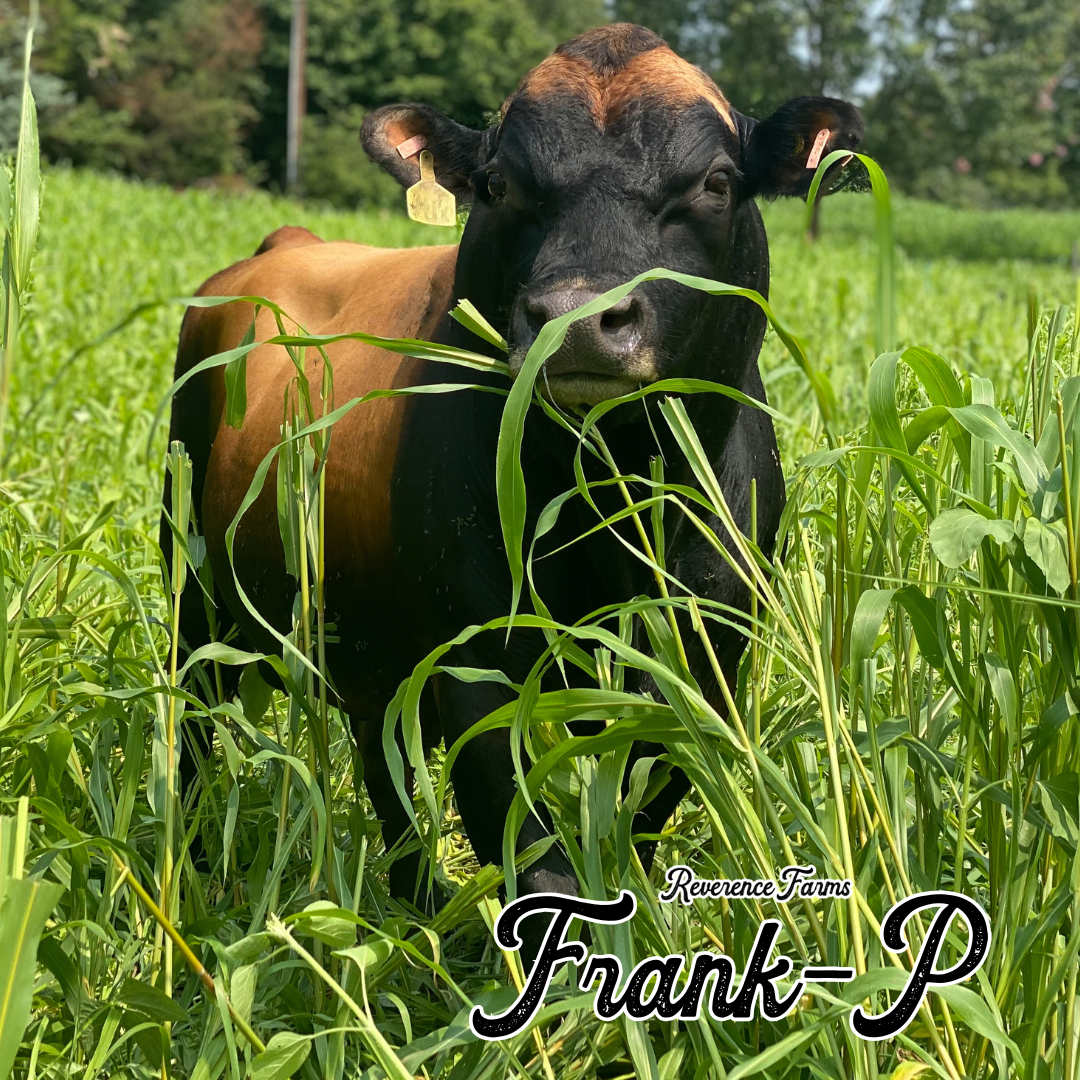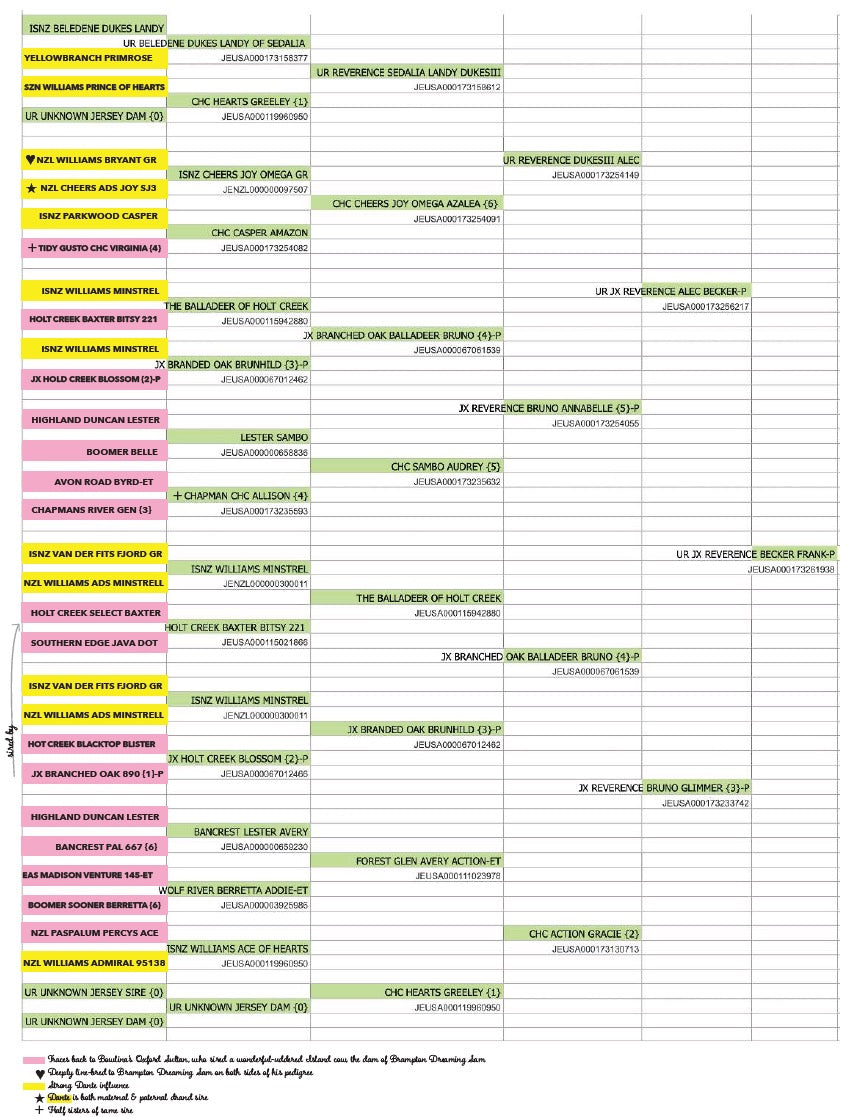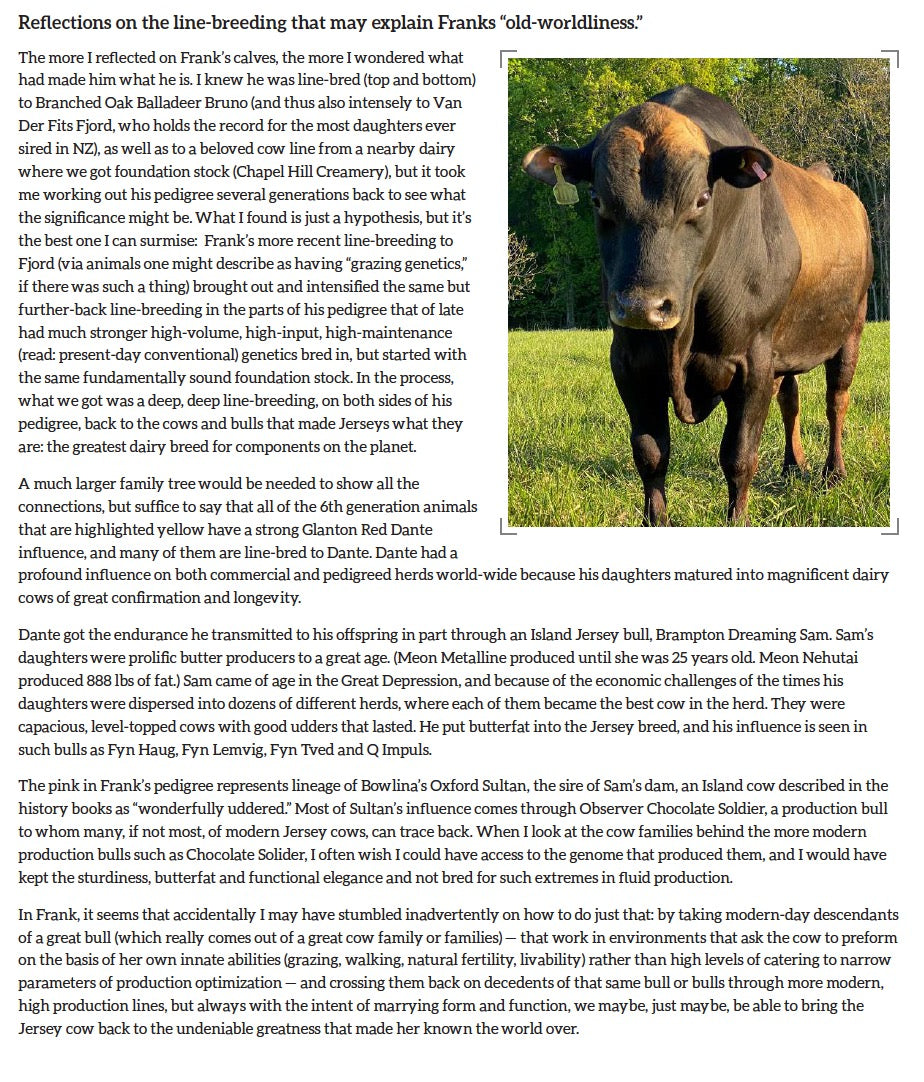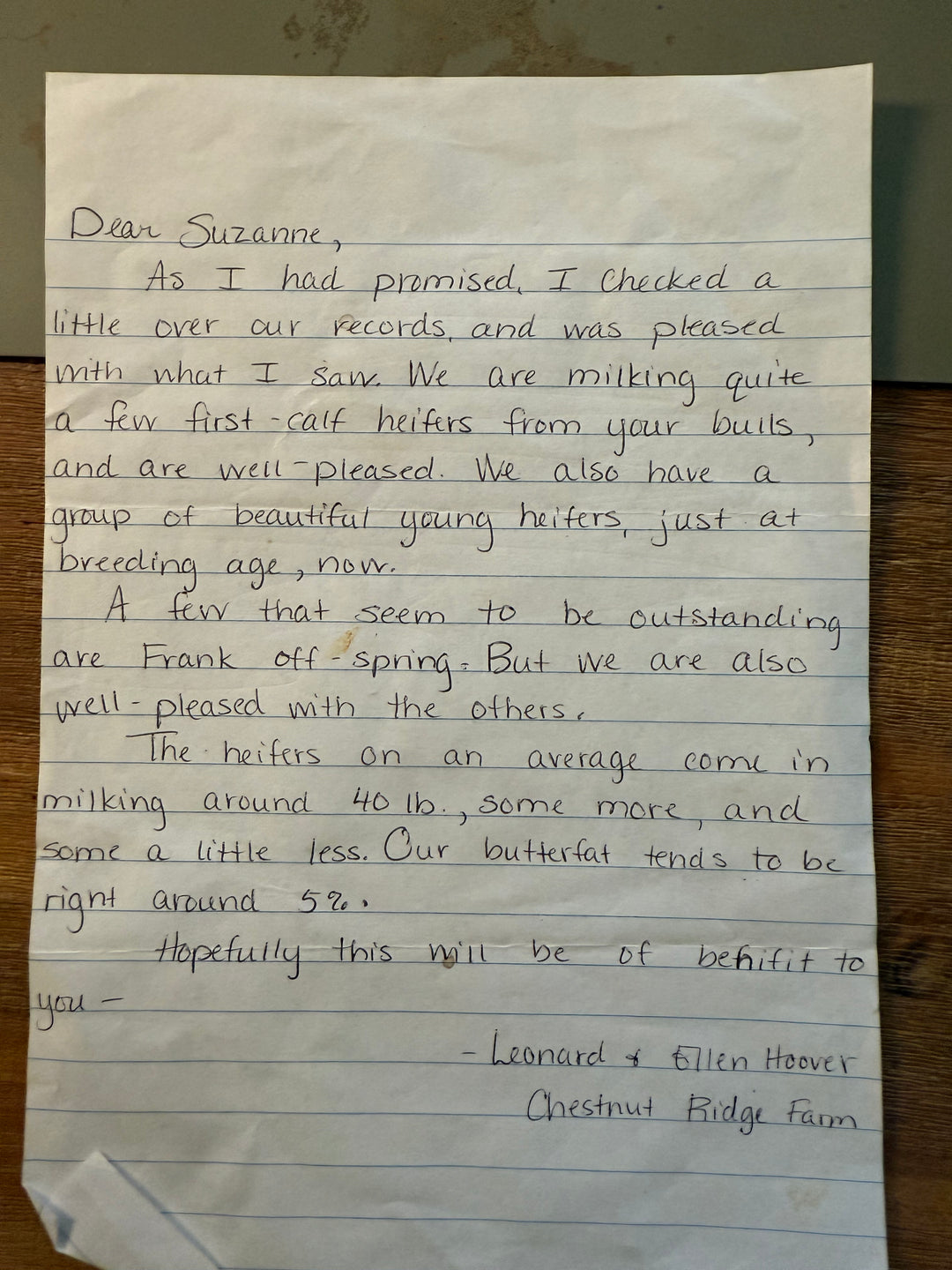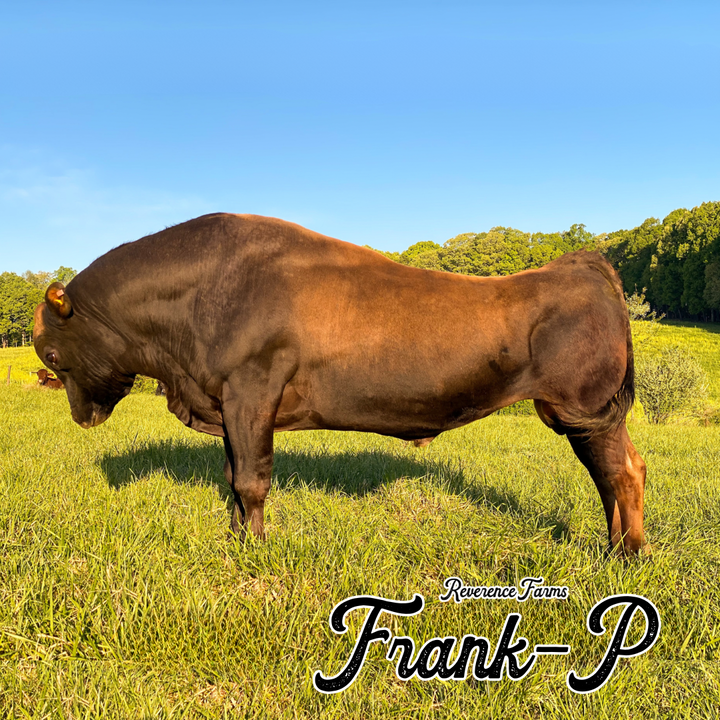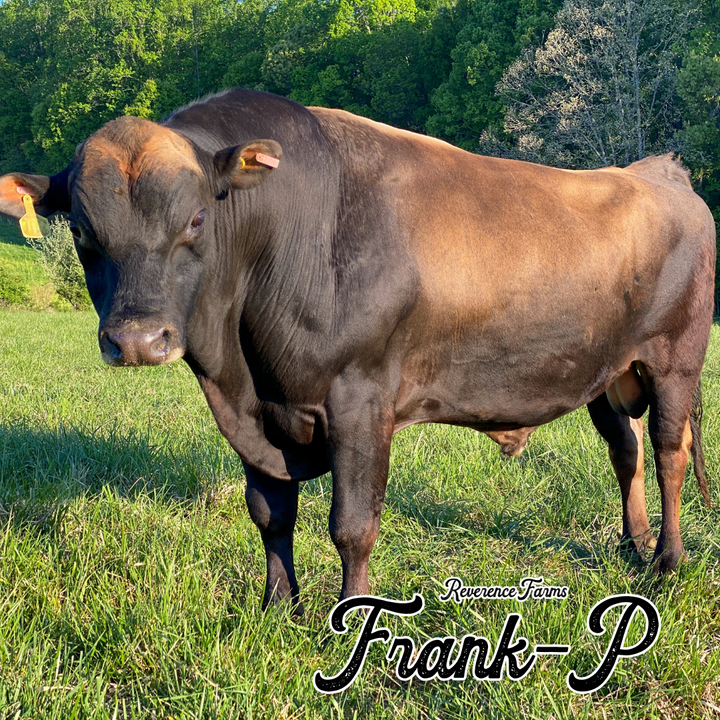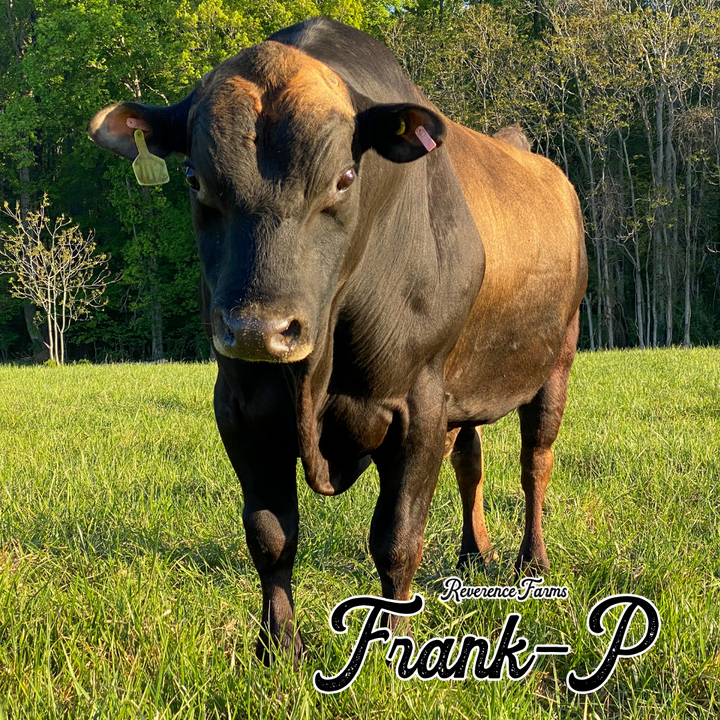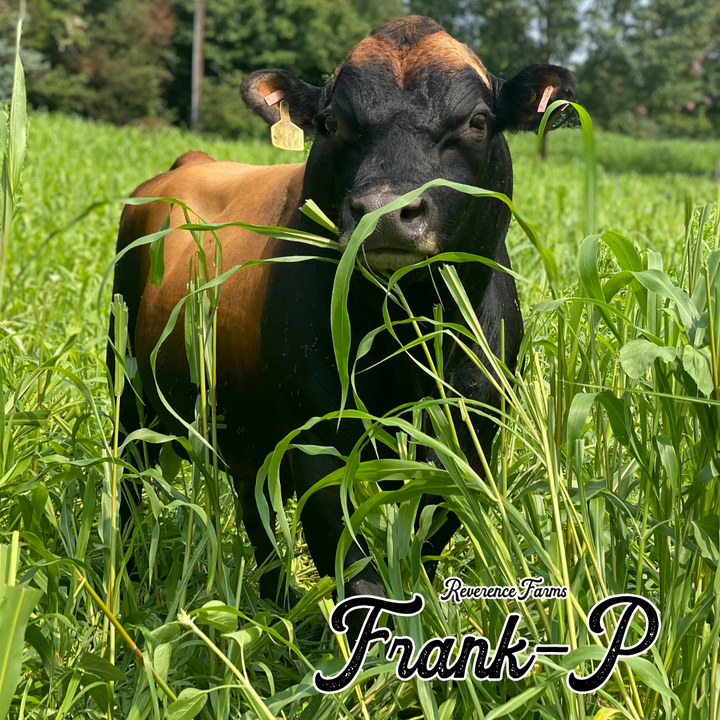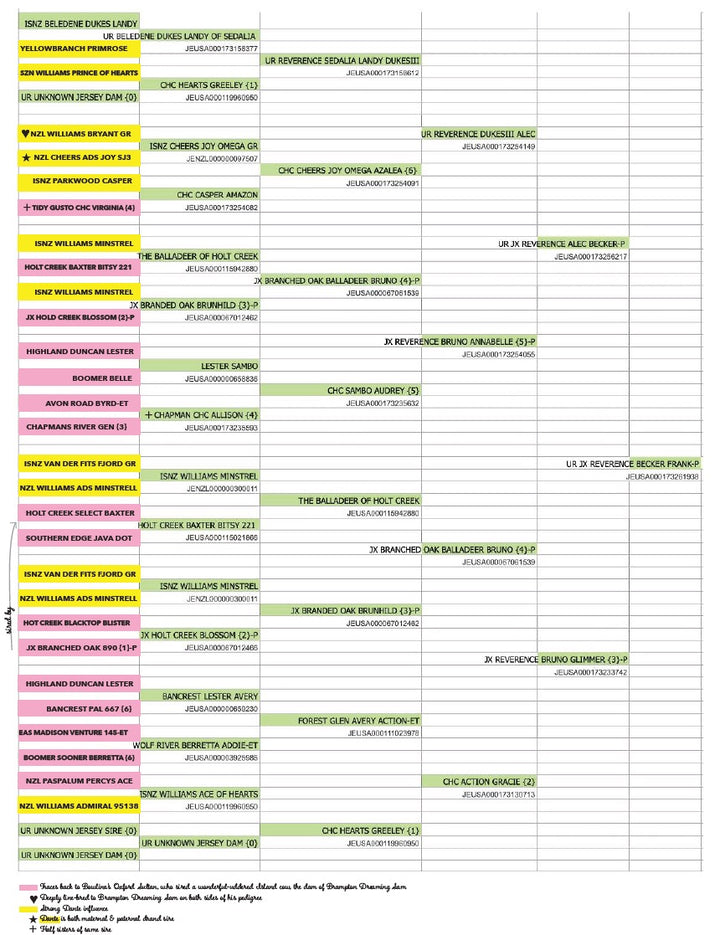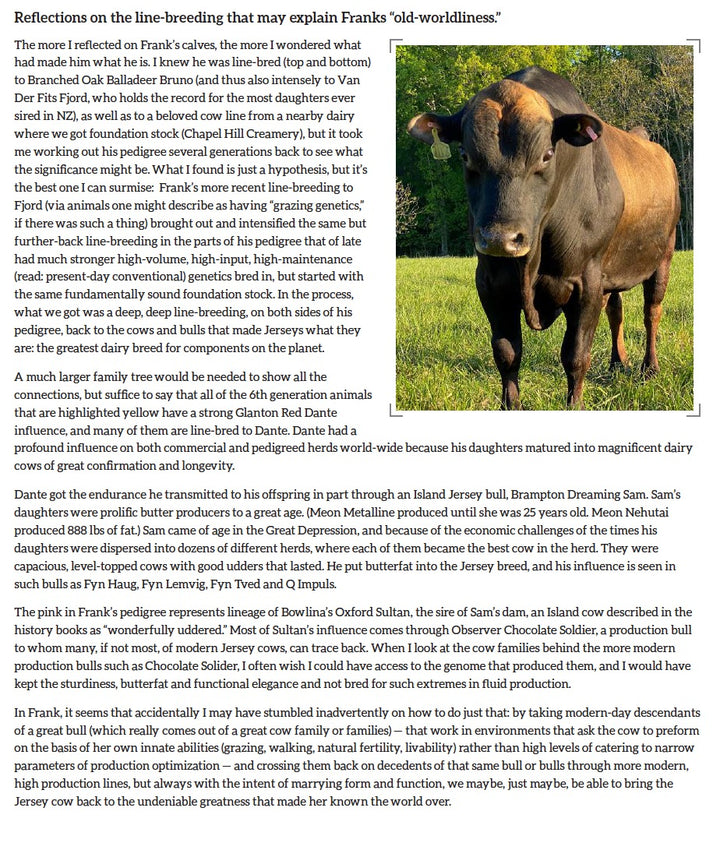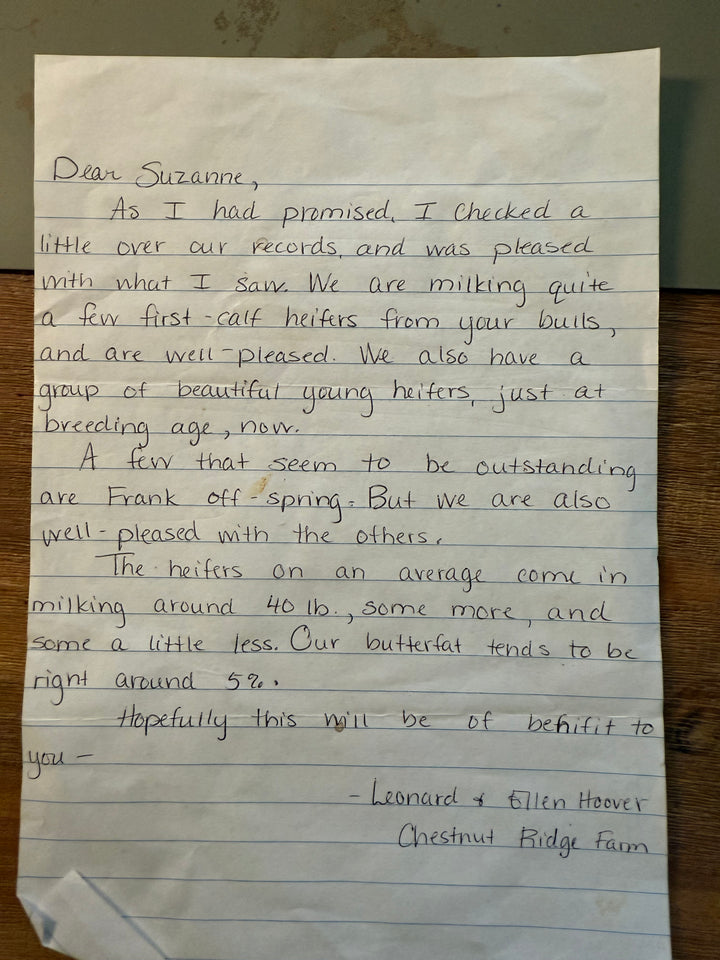Frank-P
UR JX Reverence Becker Frank-P {4}
JEUSA000173261938
Born: February 2017
aAa: 234-516 - A2A2 - BB/BB
Heterozygous Polled
This is my favorite bull in the catalog, bar none. Frank is structurally correct and balanced in every way. His thurl is centrally placed. His daughters promise to be fertile, milk well with high components and have excellent feet. He has a functional head and intelligent countenance. His still-wet offspring consistently walk ahead of their somewhat confused dams to the barn, nursing out all four quarters as they lead the way (maneuvering their necks around their dams’ moving back legs and nursing out the rear quarters, too). Their functional intelligence and strength from birth is remarkable — they are born knowing everything they need to know about being dairy animals.
Frank will add openness, strength and functional height to your cows, which doesn’t mean they will be tall — but they will have high and tight udders. His dam is only 45” and his sire was also a small-framed animal. His daughters promise to have high, elastic udders that stay clean and well-attached. He also contributes plenty of openness for capacity in the udder, as well as pelvic width for easy calving.
Frank has near perfect feet and legs and lots of openness in the chest for respiratory and circulatory health — his daughters are going to be able to walk to the barn, every day, for the duration of their long, productive lives. Both his dam and his sire are exceptionally fertile animals. His sire bred most of the animals he was exposed to as a 15-month-old, even though there were two other larger and more mature bulls present. His dam is fertile even in the sweltering NC heat and humidity.
To say that Frank surprised me would be an understatement. The product of an accidental mating, Frank was born when his dam was only 16 months old. She calved every year after that and continued to grow. When someone whose eye for Jersey cattle is far superior to mine picked him out of the herd and said, “that’s a fine-looking bull,” I felt like David’s father, Jesse, in 1 Samuel: “Frank!?”
My friend and advisor was right. There is something really different about Frank’s calves from birth, and as they’ve become bred heifers, we continue to like their soundness and disposition. Frank bred cows in Canada at a 300-cow organic grazing dairy for a couple of years, and he's now breeding a commercial grass-fed herd in Pa.
Full-disclosure: Frank’s dam was a fraternal twin to another heifer, and the twinning came from the maternal line. Interestingly, we have gotten one set of identical twin heifers out of him (confirmed by genetic testing). The JX in his name comes from a sound Shorthorn cow distantly in his pedigree (his great, great, great, great, great-grandmother, bred by a Nebraska women known her for fine cattle), and that cow is in his pedigree twice (the second time with one more “great”).
Reflections on the line-breeding that may explain Franks “old-worldliness.”
The more I reflected on Frank’s calves, the more I wondered what had made him what he is. I knew he was line-bred (top and bottom) to Branched Oak Balladeer Bruno (and thus also intensely to Van Der Fits Fjord, who holds the record for the most daughters ever sired in NZ), as well as to a beloved cow line from a nearby dairy where we got foundation stock (Chapel Hill Creamery), but it took me working out his pedigree several generations back to see what the significance might be. What I found is just a hypothesis, but it’s the best one I can surmise: Frank’s more recent line-breeding to Fjord (via animals one might describe as having “grazing genetics,” if there was such a thing) brought out and intensified the same but further-back line-breeding in the parts of his pedigree that of late had much stronger high-volume, high-input, high-maintenance (read: present-day conventional) genetics bred in, but started with the same fundamentally sound foundation stock. In the process, what we got was a deep, deep line-breeding, on both sides of his pedigree, back to the cows and bulls that made Jerseys what they are: the greatest dairy breed for components on the planet.
A much larger family tree would be needed to show all the connections, but suffice to say that all of the 6th generation animals that are highlighted yellow have a strong Glanton Red Dante influence, and many of them are line-bred to Dante. Dante had a profound influence on both commercial and pedigreed herds world-wide because his daughters matured into magnificent dairy cows of great confirmation and longevity.
Dante got the endurance he transmitted to his offspring in part through an Island Jersey bull, Brampton Dreaming Sam. Sam’s daughters were prolific butter producers to a great age. (Meon Metalline produced until she was 25 years old. Meon Nehutai produced 888 lbs of fat.) Sam came of age in the Great Depression, and because of the economic challenges of the times his daughters were dispersed into dozens of different herds, where each of them became the best cow in the herd. They were capacious, level-topped cows with good udders that lasted. He put butterfat into the Jersey breed, and his influence is seen in such bulls as Fyn Haug, Fyn Lemvig, Fyn Tved and Q Impuls.
The pink in Frank’s pedigree represents lineage of Bowlina’s Oxford Sultan, the sire of Sam’s dam, an Island cow described in the history books as “wonderfully uddered.” Most of Sultan’s influence comes through Observer Chocolate Soldier, a production bull to whom many, if not most, of modern Jersey cows, can trace back. When I look at the cow families behind the more modern production bulls such as Chocolate Solider, I often wish I could have access to the genome that produced them, and I would have kept the sturdiness, butterfat and functional elegance and not bred for such extremes in fluid production.
In Frank, it seems that accidentally I may have stumbled inadvertently on how to do just that: by taking modern-day descendants of a great bull (which really comes out of a great cow family or families) — that work in environments that ask the cow to perform on the basis of her own innate abilities (grazing, walking, natural fertility, livability) rather than high levels of catering to narrow parameters of production optimization — and crossing them back on decedents of that same bull or bulls through more modern, high production lines, but always with the intent of marrying form and function, we maybe, just maybe, be able to bring the Jersey cow back to the undeniable greatness that made her known the world over.
HEIFERPLUS works by enhancing the fertility of the X-chromosome bearing (female) sperm and slowing the motility of the Y-chromosome bearing (male) sperm. When inseminated, the sperm sort in the reproductive tract of the dam. The result is more ova fertilized by the X-chromosome bearing (female) sperm. The heifer sex ratio is increased by 20-25% and fertility is boosted 5-20%.
INCUBATION TIMES
Incubate for 10 minutes before insemination.TIMING OF INSEMINATION
-When breeding from observed heat (natural or synchronized): Breed heifers 16 hrs and cows 18 hrs following first standing heat.
-When timed-breeding using OVSYNCHR: Breed heifers 18 hrs after the last GnRH injection. Breed cows 24 hrs after last GnRH.
-When breeding super-ovulated heifers and cows: With double inseminations - Breed at 16 hrs and 24 hrs following first standing heat. With single insemination - Breed 20 hrs after first standing heat.
-When timed-breeding using progestins (CIDR/Crestor): Breed heifers 66-72 hrs and cows 68-74 hrs after removal of CIDR/Crestor implant.
NOTICE: USE OF THIS PRODUCT MAY REQUIRE A DELAY IN THE TIMING OF INSEMINATION. WAIT AT LEAST 16 HRS AFTER ONSET OF STANDING HEAT BEFORE USE OF THIS PRODUCT.
**Note: In general, breed virgin heifers 3 hrs. earlier than mature cows.
*There is a minimum order of five conventional or Heifer+ straws per cow. The shipping cost is significant & having extra is better than needing another shipment.
*For a $10 discount per straw, order ten or more straws of the same bull (discount will automatically be applied in your cart).
*There is no minimum for purchasing sexed straws. We recommend purchasing a minimum of three straws, whether conventional, sexed or a combination. If breeding multiple cows, you can round down somewhat because hopefully the law of averages means at least one of your cows settles on the first service, freeing up other straws for multiple services. You can use any additional straws next year.
**TO AVOID an extra charge of $150 for a complete nitrogen refill, you must return the tank within the 2 week timeframe stated in the return instructions.
***Tanks that are not returned are subject to a $1500 replacement fee.
****If you are local to Graham, North Carolina and would like to pick up on farm instead of having your order shipped, please first email bulls[at]reverencefarms.com to check availability and receive a custom invoice.


